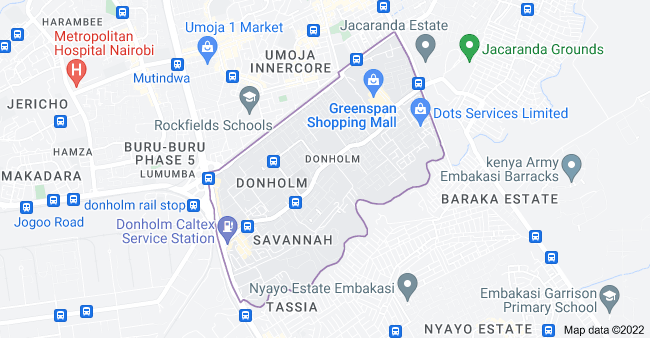Donholm: An Intriguing Past and Vibrant Present

Image credit: Standard Media
If you went back in time to early 1900s Nairobi, you would find that the estate we call Donholm was actually named Doonholm Farm. Although the name is more commonly spelt as Donholm now, the name Doonholm was originally a tribute to an estate of the same name in Glasgow.
Located in Eastlands, Donholm Estate has a special place in the history of dairy in Kenya as a previously top-notch farm. It is also one of the oldest Eastlands estates. Many firsts occurred on the land that is now home to many Nairobians.
No Ordinary Farm
Doonholm Farm was owned by James Kerr Watson who turned it into not just a farm but an experimental one. It was at this 4,600-acre farm that a pioneering investigation countering East Coast fever took place. When Watson began to lose livestock to the East Coast Fever (a tick disease), he ordered the first shipment of chemicals from Coopers to build dipping tanks. The first ever cattle dip in Kenya was borne of this effort. Watson also introduced the first ever cohort of Ayrshire cows in East Africa – cattle named after Watson’s home of Ayr, Scotland. The area reminded him of the holms (flat ground near a river) of his home.
A European architect, Watson is credited with erecting notable buildings such as the Kenya National Archives. He planted a large portion of the palm trees in Nairobi and built residential homes in Muthaiga. These grand ideas were envisioned in his office in Doonholm.
As farms went, Doonholm was no typical one. In the hopes of delivering milk to the city, Watson built Doonholm Road – a murram track running through Doonholm Farm that we now know as Jogoo Road. At the time, this road ran alongside estates where African workforces majorly lived.

Doonholm from the air. Image sourced from John Kamau’s Newsletter
The Last Days of Doonholm Farm
Despite many successes in the world of dairy farming, the 1940s heralded difficult times for Doonholm Farm. A drought from 1939-1940 did not bode well for Doonholm Farm. On top of this, a loan taken from Land Bank was steadily accumulating an interest of 8% – it became urgent to clear it. A combination of the drought, ticks attacking the livestock, and debt led to a third of the farm being sold to a Polish farmer to raise income. It also became necessary to lease some of the Doonholm land to raise funds.
As Nairobi developed, it became more and more difficult for the farm to operate. In 1950, the government acquired most of the farm land to build Embakasi Airport. JKIA now sits on part of the land that made up Doonholm Farm.
When Watson passed away in 1955 at the height of the State of Emergency, Doonholm Farm became mired in uncertainty. By the time 1960 came around, the government took larger bites out of the farm to expand Doonholm Road and add to Lunga Lunga Road. In 1966, Machakos MP William Malu purchased the last of Doonholm Farm.
Post-independence, the Doonholm name was kept on as the constituency name – although it was renamed to Bahati and Makadara later on.
A Farm No More
Contrary to its history as a serene farm, Donholm is now a fully-fledged residential area with no shortage of apartment blocks. The neighbourhood is devoid of empty spaces with churches, shops, restaurants and buildings taking up almost every square inch. Best known as Doni, the estate is full of vim and vigour.
What is clear is that Donholm remains one of Nairobi’s most well-known estates with a captivating and layered history.
Are you familiar with Donholm? Is there something you wish other knew about this estate?
Let us know in the comments!
#DonholmEstate #MitaaYetu





2 Comments
Great lesson now I know More about doonholm
Asante sana Josephine!